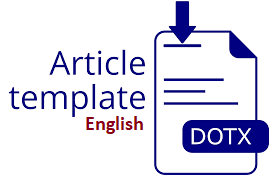Penerapan Algoritma Xtea Dengan Metode Pembangkitan Kunci Linear Congruential Generator Untuk Pengamanan Teks Rahasia
DOI:
https://doi.org/10.30865/resolusi.v2i3.272Keywords:
Cryptography; Text; XTEA; LCGAbstract
Confidential text data is very vulnerable to wiretapping by irresponsible parties. The text is still plaintext, making it easier for the attacker to make use of it. Text data can be secured by several techniques. One of them is cryptographic techniques. Cryptographic techniques can secure secret text data by randomizing the hex value of the data into a data that cannot be recognized and read. One of the reliable algorithms is the eXtended Tiny Encryption Algorithm (XTEA) symmetry algorithm. The XTEA algorithm is a simple algorithm that is lightweight and fast in the encryption and decryption process. However, the concept of the symmetry algorithm is the encryption and decryption process using the same key. The security of this concept is very vulnerable if the key is leaked and is public. So that this can be optimized by generating keys using the Linear Congruential Generator (LCG) method. Key generation is used with prime numbers. The key sent to an eligible recipient is only the initial prime number. So that the recipient has to do key assembly first to carry out the decryption process. This can optimize the encrypted ciphertext using the XTEA algorithm.
Downloads
Bila bermanfaat silahkan share artikel ini
Berikan Komentar Anda terhadap artikel Penerapan Algoritma Xtea Dengan Metode Pembangkitan Kunci Linear Congruential Generator Untuk Pengamanan Teks Rahasia
ARTICLE HISTORY
Issue
Section
Copyright (c) 2022 Nusra Anwar, Sinar Sinurat, Imam Saputra

This work is licensed under a Creative Commons Attribution 4.0 International License.
Authors who publish with this journal agree to the following terms:
- Authors retain copyright and grant the journal right of first publication with the work simultaneously licensed under Creative Commons Attribution 4.0 International License that allows others to share the work with an acknowledgment of the work's authorship and initial publication in this journal.
- Authors are able to enter into separate, additional contractual arrangements for the non-exclusive distribution of the journal's published version of the work (e.g., post it to an institutional repository or publish it in a book), with an acknowledgment of its initial publication in this journal.
- Authors are permitted and encouraged to post their work online (e.g., in institutional repositories or on their website) prior to and during the submission process, as it can lead to productive exchanges, as well as earlier and greater citation of published work (Refer to The Effect of Open Access).















